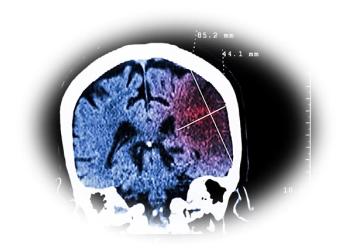
Can “Moderate” Drinking Damage Aging Hearts?
A new imaging study finds that more than one cocktail a day for seniors aged >75 years may do more harm than good.
Despite the reported cardioprotective effects of moderate alcohol consumption, seniors who consume 2 or more drinks a day may be doing some damage to their hearts, according to a large imaging study published online in
Led by
Study participants, drawn from visit 5 in the prospective observational
Nondrinkers were more likely to be women with higher body mass index, and nondrinkers of both sexes were older, with lower education levels and annual incomes. They were also more likely to have diabetes, lower low-density lipoprotein (LDL) cholesterol and high-density (HDL) cholesterol levels, and a higher triglyceride/HDL ratio. Drinkers of ≥14 drinks per week of both sexes were more frequently smokers and had higher LDL and HDL levels.
The relationship between alcohol consumption and hypertension was U-shaped in both sexes, with hypertension being more frequent among nondrinkers and in those drinking ≥14 drinks per week. There was no significant trend in the prevalence of coronary artery disease by intake category.
The investigators reported subtle cardiac alterations in both sexes. In women and men, escalating alcohol intake was associated with larger left ventricular (LV) diastolic and systolic diameters and larger left atrial diameter (P<.05). In men, increasing alcohol intake correlated with greater LV mass (8.2 + 3.8 g per category, P=.029), a higher tricuspid annulus peak systolic velocity, and a higher E/E' ratio (0.82 + 0.33 per category, P=.014), suggesting increasing diastolic pressures.
In women, increasing alcohol intake was associated linearly with a modestly lower LV ejection fraction (-1.9 + 0.6% per category, P=.002) and a propensity toward worse LV peak global longitudinal strain (0.45 + 0.25% per category, P=.07).
“In spite of increasing LV end-diastolic diameter, no significant increase in LV volumes was observed in either men or women according to alcohol intake,” the authors wrote. While the number of black participants was relatively small, especially at the higher end of the consumption spectrum, they observed a significant interaction between race and alcohol intake in men for LV end-diastolic diameter, with greater increases in black men than white men at the same consumption level (P=.008).
“Women appear more susceptible than men to the cardiotoxic effects of alcohol, which might potentially contribute to a higher risk of alcoholic cardiomyopathy, for any given level of alcohol intake,” said senior author
Added Goncalves, “In spite of potential benefits of low alcohol intake, our findings highlight the possible hazards to cardiac structure and function by increased amounts of alcohol consumption in the elderly, particularly among women. This reinforces the U.S. recommendations stating that those who drink should do so with moderation.” Moderate drinking is generally defined as 2 alcoholic beverages a day for men and 1 for women.
As for limitations, the authors note the study’s confounding-prone observational design, which cannot establish causality between alcohol and cardiac alterations, as well as its self-reported and hence perhaps under-reported use of alcohol. In addition, its findings may not apply to younger and nonwhite populations.
Action Points
- In an elderly community-based population, self-reported alcohol intake is associated with subtle alterations in cardiac structure and function, with some sex-based differences.
- In women and men, escalating alcohol intake was associated with larger left ventricular (LV) diastolic and systolic diameters and larger left atrial diameter.
The study was funded by the National Heart, Lung, and Blood Institute.
The authors disclosed no competing interests.
This article was first published on
This article was first published on MedPage Today and reprinted with permission. Free registration is required - See more at: http://www.consultantlive.com/respiratory-diseases/e-cigs-hamper-ability-cough#sthash.mxr3vwC8.dpufThis article was first published on MedPage Today and reprinted with permission. Free registration is required - See more at: http://www.consultantlive.com/respiratory-diseases/e-cigs-hamper-ability-cough#sthash.mxr3vwC8.dpuf
References:
Goncalves A, et al "
Newsletter
Enhance your clinical practice with the Patient Care newsletter, offering the latest evidence-based guidelines, diagnostic insights, and treatment strategies for primary care physicians.
















































































































































































































































































